Complete Solutions to Solved Examples of chapter NEWTON'S LAWS OF MOTION 1 of Class 11 book with complete answers and questions
| Class 11 | PHYSICS |
| Chapter | NEWTON'S LAWS OF MOTION 1 |
| CENGAGE PHYSICS | Solved Examples |
| Number Of Questions | 11 |
| Academic Year | 2023-24 |
Two blocks of masses 5kg and 2 kg are initially at rest on the floor. They are connected by a light string. Passing over a light frictionless pulley. An upwards force F is applied on the pulley and maintained at a constant value. Calculate the acceleration `a_(1)` and `a_(2)` of the 5-kg and 2-kg masses, respectively, when F is (take `g=10ms^(-2)` )
(a) 30N, (b) 60N , (c) 140N
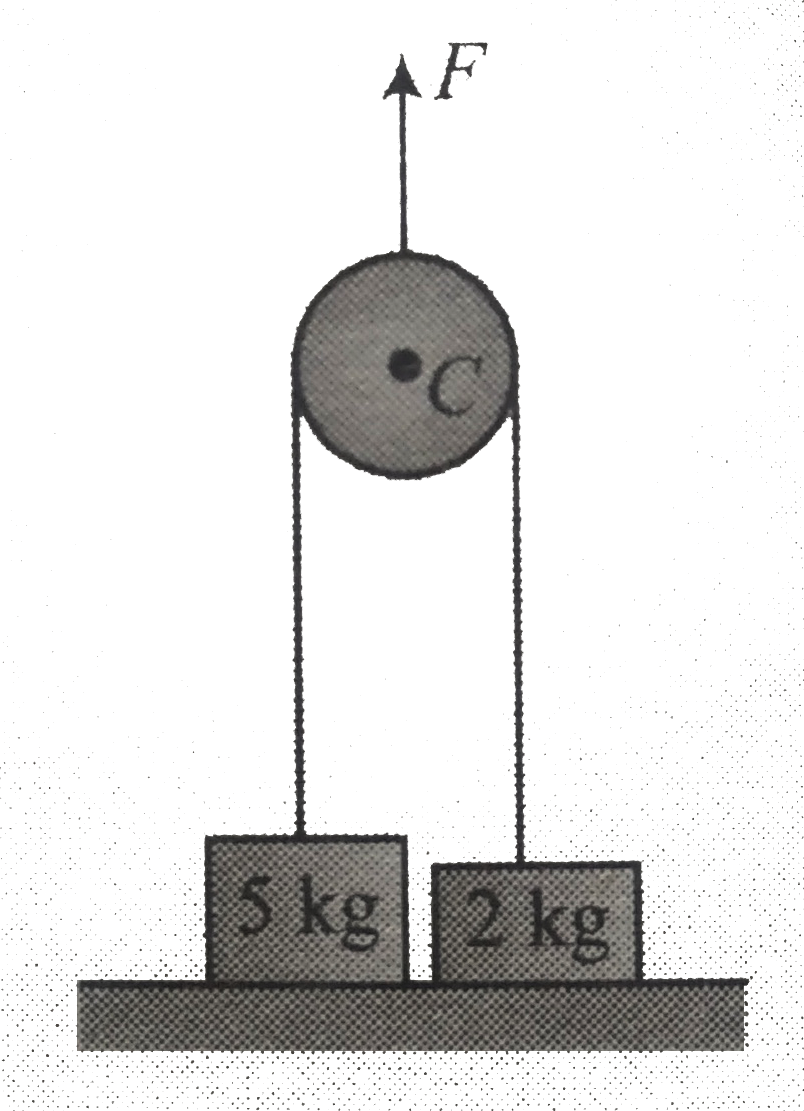 .05:09View Solution
.05:09View SolutionIn the arrangement shown in fig. `m_(1)=1kg, m_(2)=2 kg`. Pulleys are massless and strings are light. For what value of M, the mass `m_(1)` moves with constant velocity.
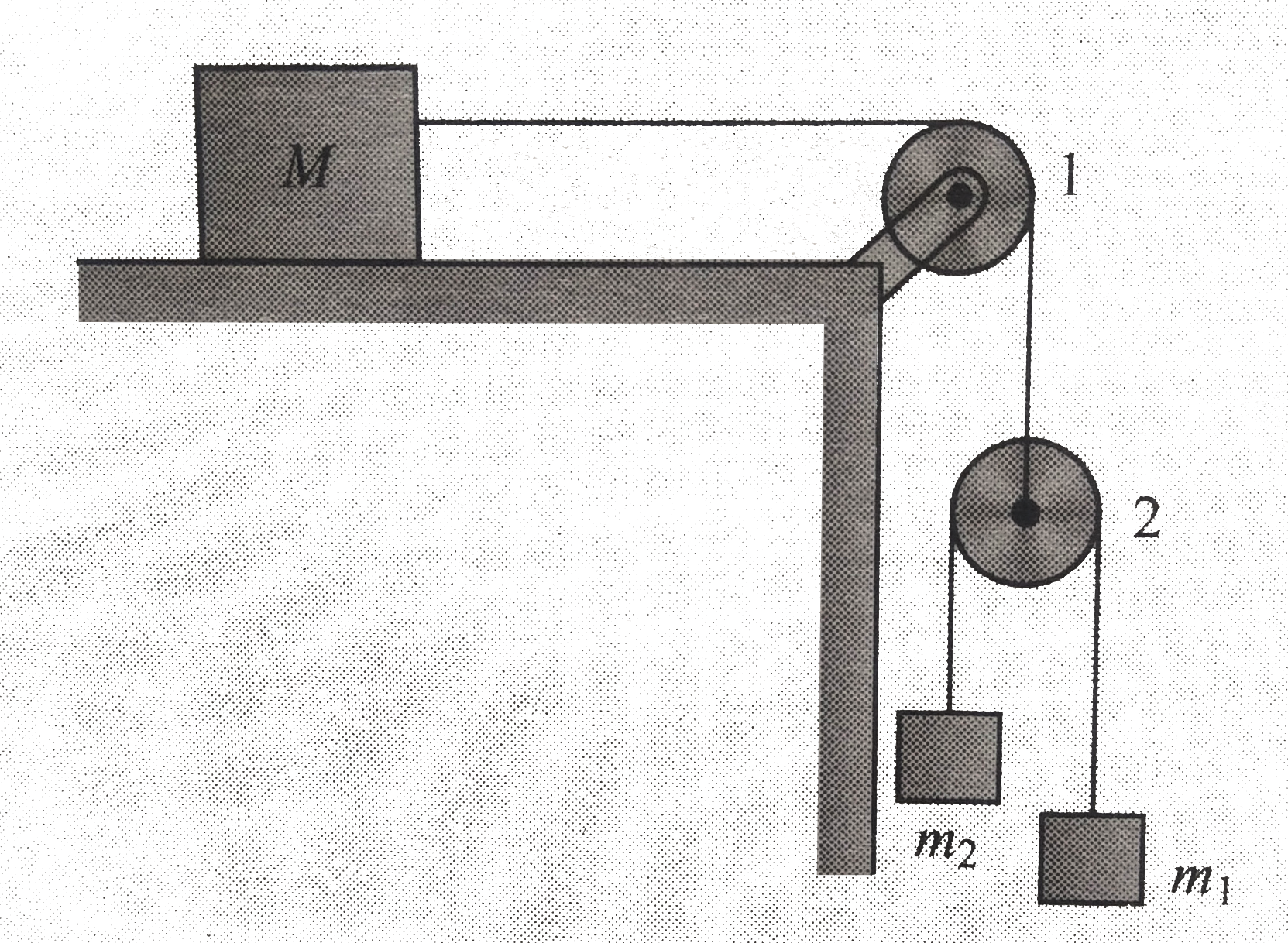 04:26View Solution
04:26View SolutionPulleys shown in the system are massless and fricionless. Threads are inextensible. The mass of blocks A, B, and C are `m_(1)=2kg, m_(2)=4kg`, and `(m_3)=2.75 kg`, respectively. Calculate the acceleration of each block.
 View Solution
View SolutionIn the arrangement shown in fig., mass of the rod M exceeds the mass m of the ball. The ball has an opening permitting it to slide along the thread with some friction. The mass of the pulley and the friction in its axle are negligible. At the initial moment, the ball was located opposite the lower end of the rod. When set free, both bodies began moving with constant accelerations. Find the friction force between the ball and the thread if t seconds after the beginning of motion, the ball got opposite to the upper end of the rod. The rod length equals l.
 10:33View Solution
10:33View SolutionA block of mass m is placed on the inclined sufrace of a wedge as shown in fig. Calculate the acceleration of the wedge and the block when the block is released. Assume all surfaces are frictionless.
 07:53View Solution
07:53View SolutionThe mass of wedge, shown in figure is M and that of the block is m. Neglecting friction at all the places and mass of the pulley. Calculate the acceleration of wedge. Thread is inextensible.
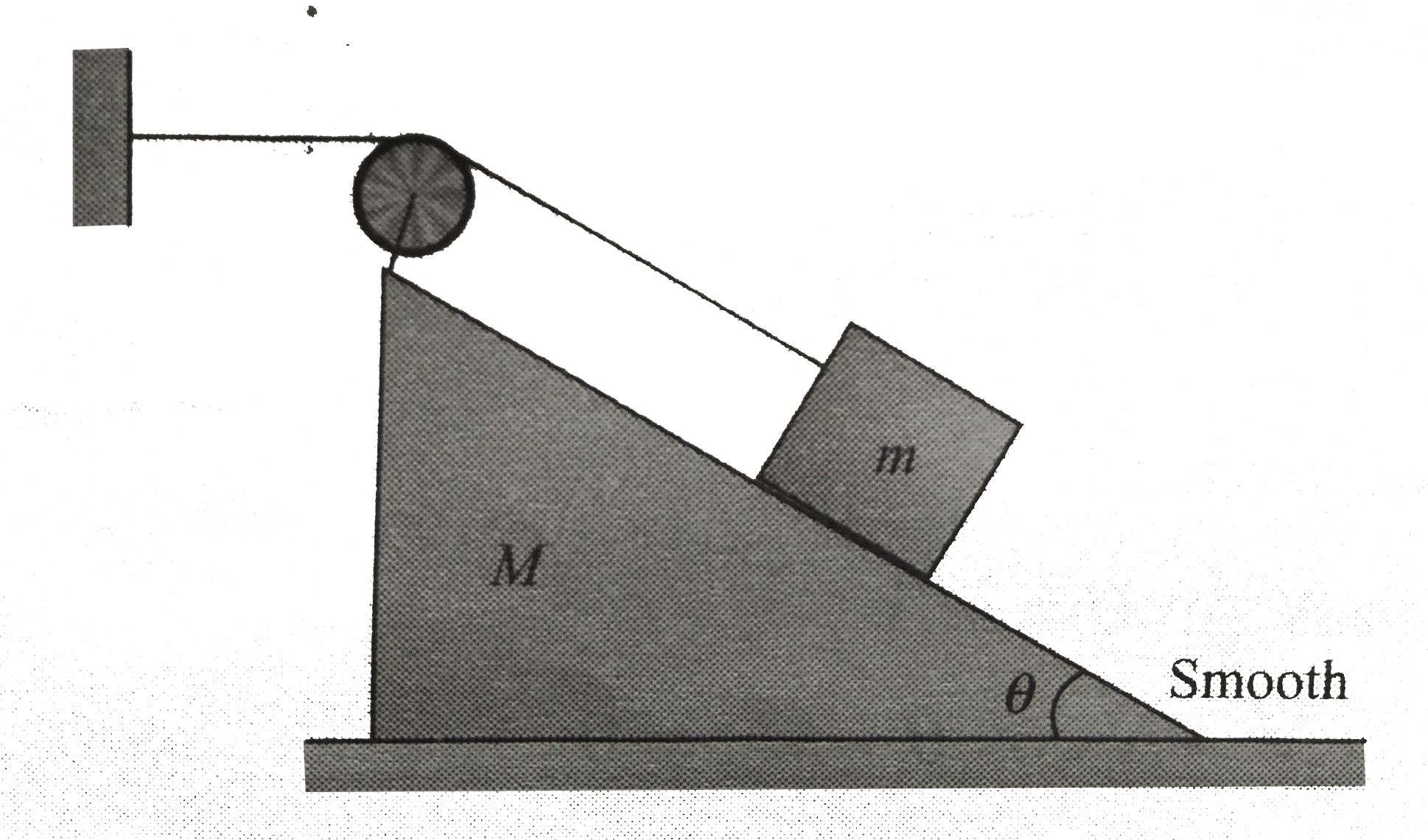 09:26View Solution
09:26View SolutionA block of mass m can slide freely in a slot made in a bigger of mass M as shown in fig. There is no friction anywhere in the system.
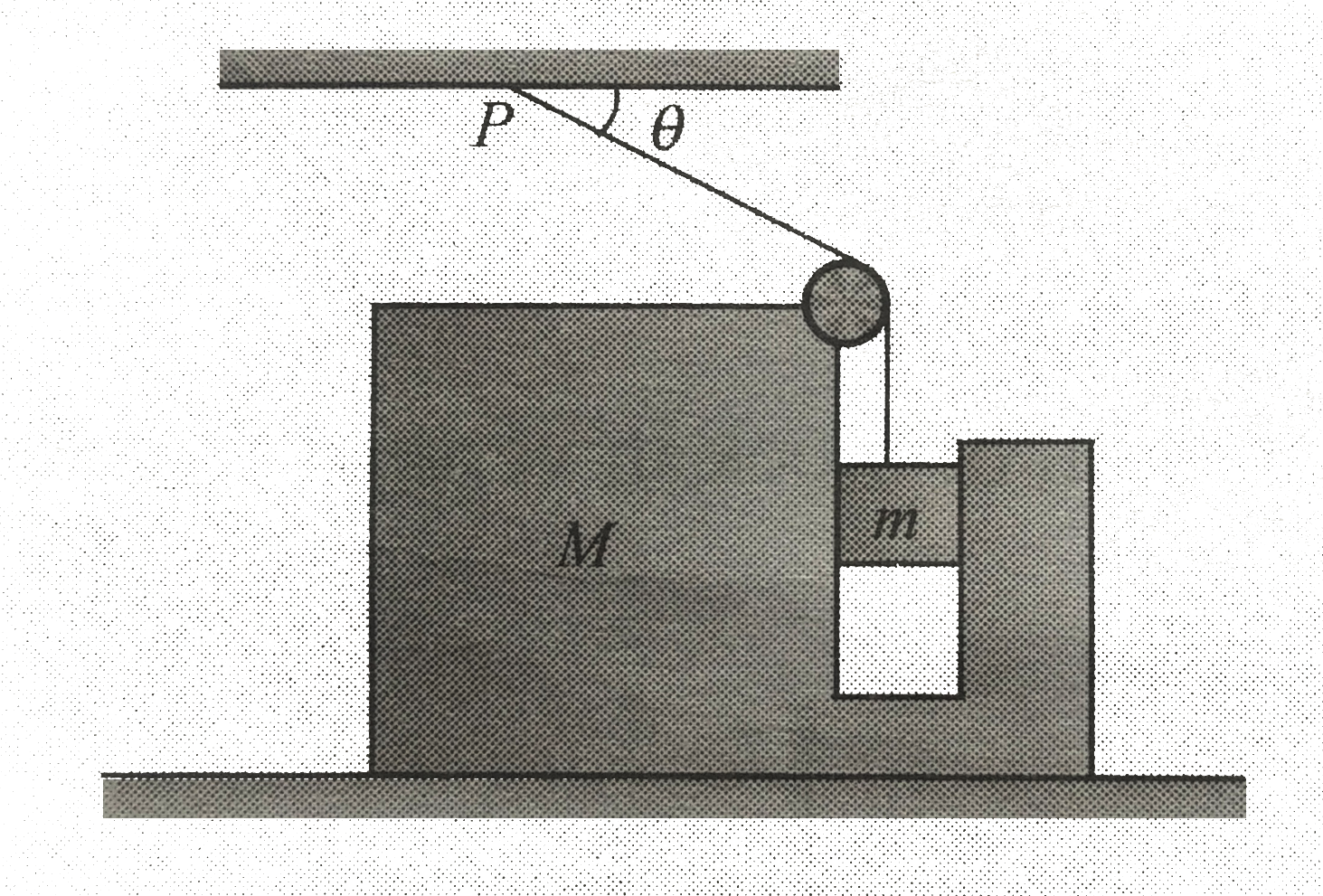
The block m is connected to one end of a string whose other end is fixed at point P. system is released from rest when the string at P makes an angle `theta` with horizontal. Find the acceleration of m and M after release.04:16View SolutionA block of mass m can slide freely along the verticle surface of a bigger block of mass M as shown in fig. There is no friction anywhere in the system. The block m is connected to one end is fixed at point P.
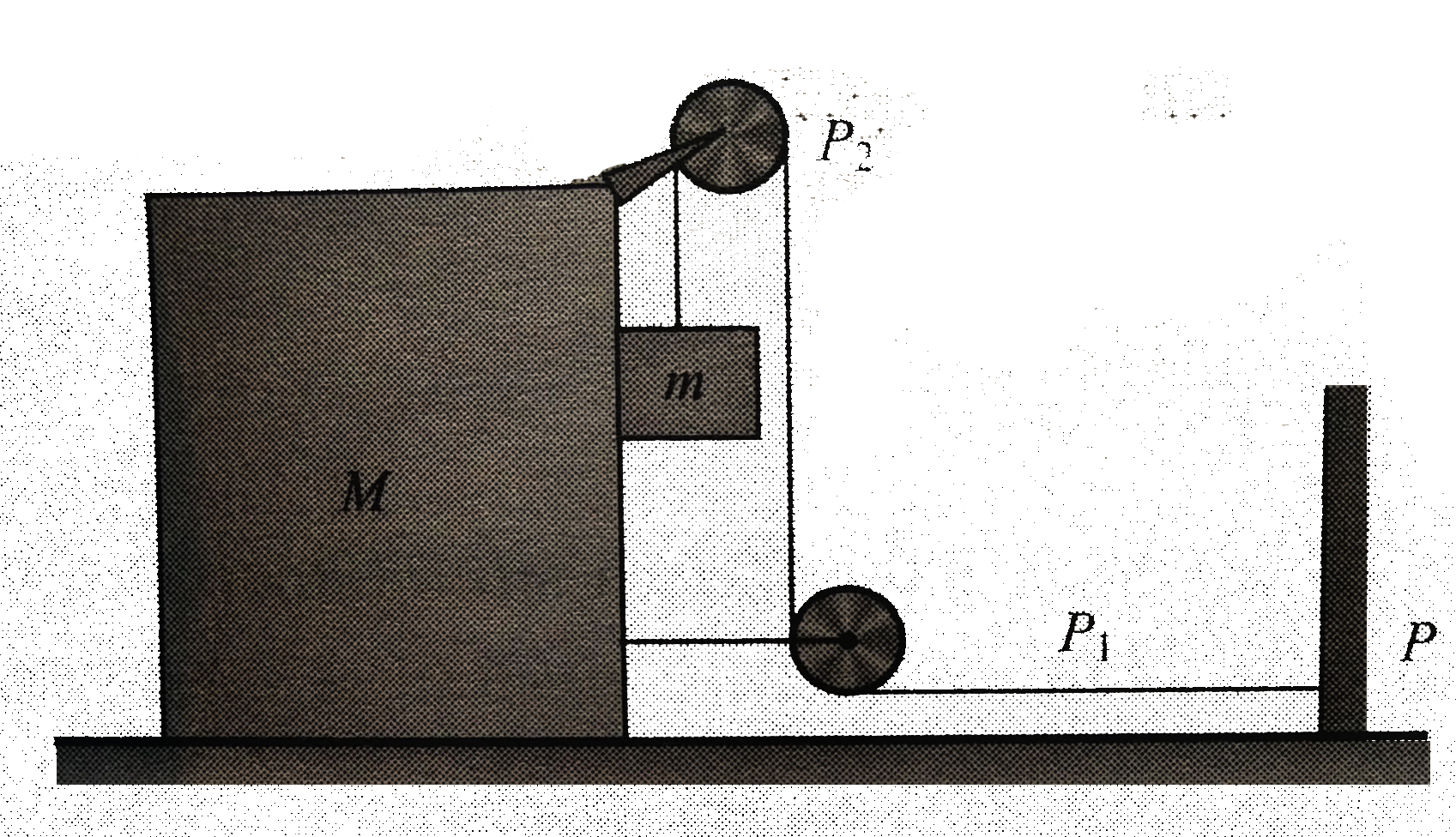
The string between `P_(1)` and P is horizontal and other parts of the string are vertical. system is released from rest. Find the acceleration of m and M during their subsequent motion.06:12View SolutionConsider a system of a small body of mass m kept on a large body of mass M placed over an inclined plane of the angle of inclination `theta` to the horizontal. Find the acceleration of m when the system is set in motion. Assume an inclined plane to be fixed. all the contact surfaces are smooth.
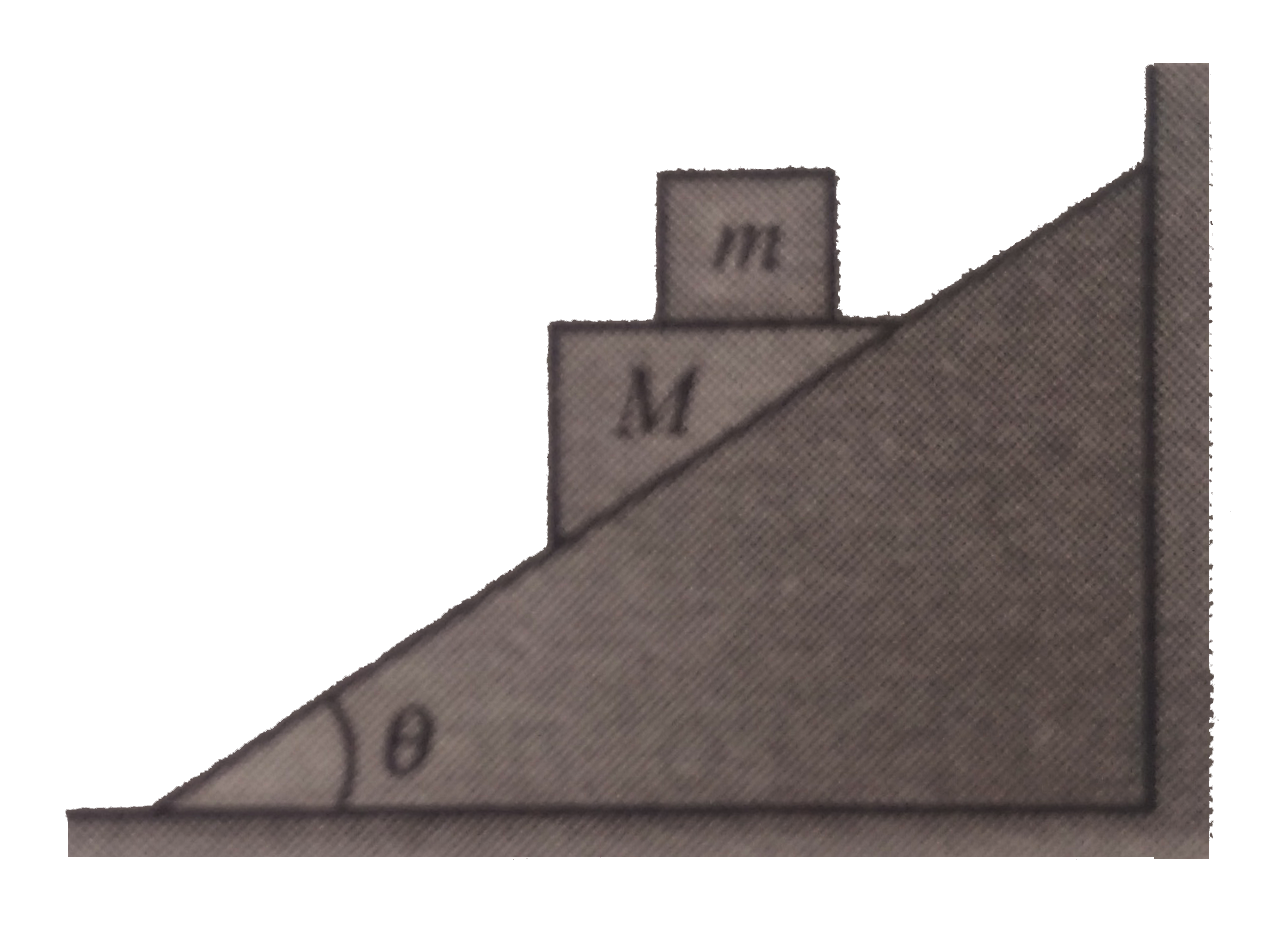 03:04View Solution
03:04View SolutionThe mass of wedge, shown in figure is M and that of the block is m. Neglecting friction at all the places and mass of the pulley. Calculate the acceleration of wedge. Thread is inextensible.
 09:26View Solution
09:26View SolutionThree blocks arranged with pullwy and spring as shown in fig. If the string connecting blocks `m_(2)` and `m_(3)` is cut at point A, find the acceleration of masses `m_(1), m_(2)` and `m_(3)`. Just after the string is cut at point A.
 05:48View Solution
05:48View Solution
Solved Examples questions and complete solutions for chapter NEWTON'S LAWS OF MOTION 1 of CENGAGE PHYSICS (ENGLISH) of Class 11
